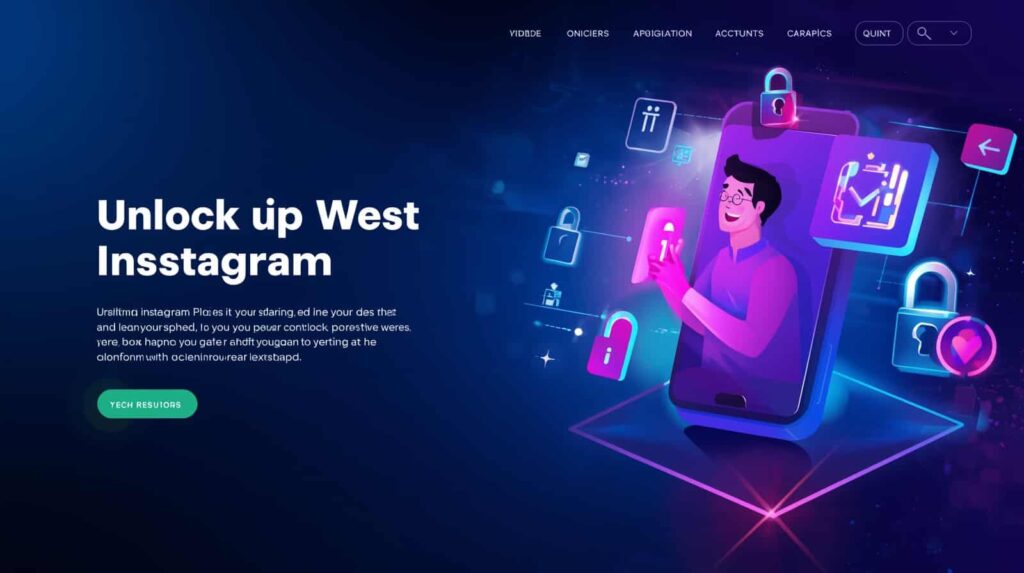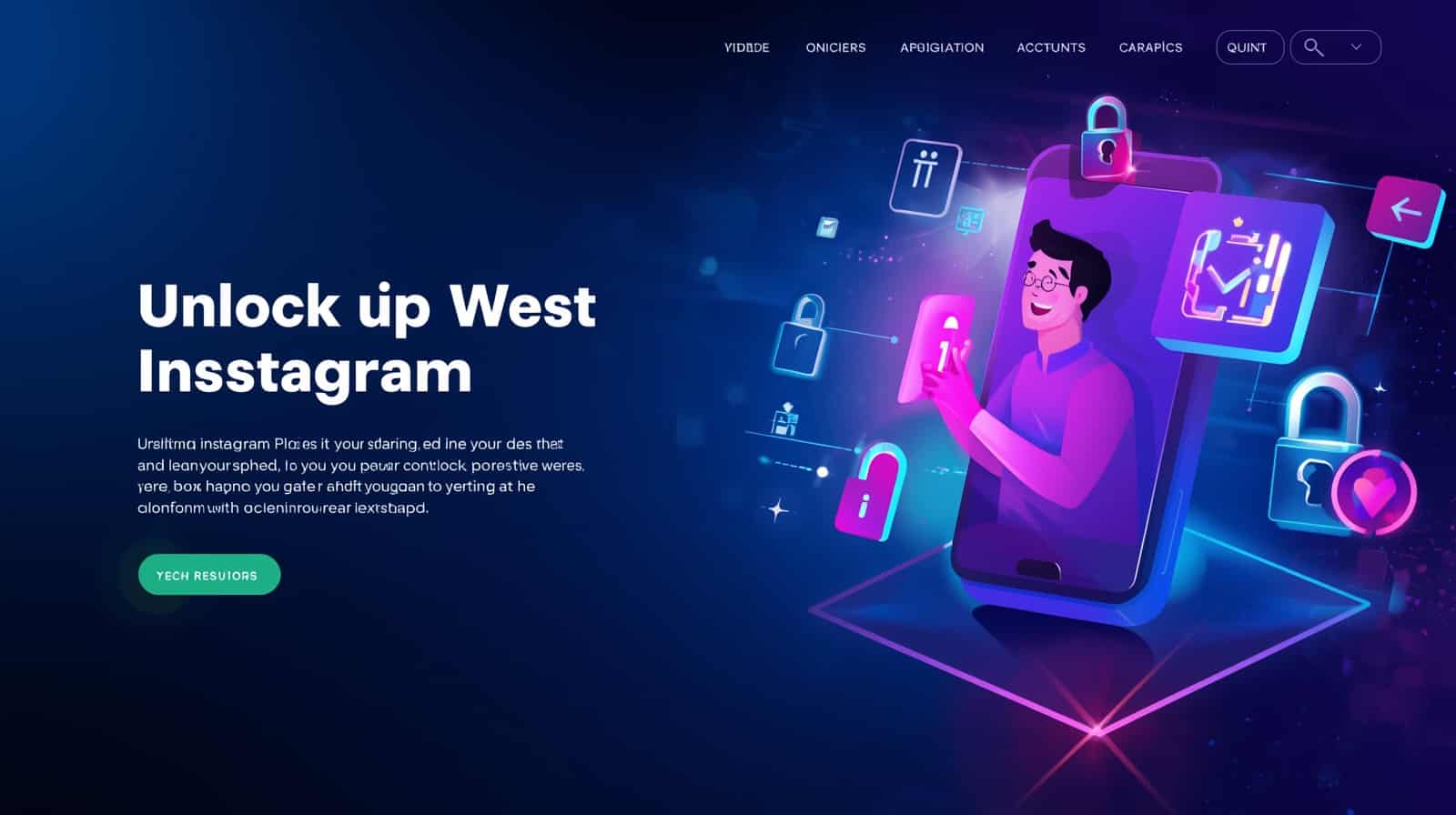Losing access to your Instagram is a sinking, chest-tightening feeling. Your photos, messages, followers, and sometimes income suddenly feel out of reach. If you’re searching “Instagram hacked what to do” or “recover hacked Instagram,” you’re in the right place. I recently suffered a hacked Instagram account and got it back in just 24 hours. In this article I’ll walk you through the exact, beginner-friendly steps I used — seven practical tricks that worked like magic — and share extra Instagram security tips so you won’t repeat my mistake.

This is a step-by-step, action-first guide for anyone facing a hacked Instagram account, people worried about how to recover Instagram password, or those who want to protect Instagram from hackers. Read on, follow the numbered actions, and keep calm — recovery is possible.
How to Regain Access to Your Instagram
My Instagram Got Hacked — Here’s What Happened
A few weeks ago I opened Instagram and saw a sudden change: my profile picture was different, my bio was edited, and I couldn’t send DMs. Worse, when I tried to log in from my desktop, the password I knew didn’t work.
At first I panicked. Then I followed a clear checklist: gather proof, secure my email, use Instagram’s account recovery tools, and escalate to support. Within 24 hours I regained control.
Why this story matters:
- It’s proof that acting fast and methodically increases your chance to recover hacked Instagram quickly.
- It shows common attack patterns: phishing link, credential reuse, or a compromised connected app.
- It demonstrates reliable steps you can follow now if your hacked Instagram account.
Below I share my seven tricks and practical checklists I used, plus extra protections so you don’t need to search “hacked Instagram help” again.
Step 1: Stay Calm and Gather Proof of Ownership
The first few minutes are crucial. When your account is hacked, emotional reactions can cause mistakes: clicking unknown links, trying random recovery tricks, or sharing personal info with scammers.
Action plan — what to do immediately:
- Don’t share more info. Avoid responding to any suspicious DMs or emails that claim to be Instagram unless they come from an official source.
- Take screenshots. Capture any visible changes — profile edits, unfamiliar posts, or DMs the hacker sent.
- List account details. Write down:
- Username (exact spelling)
- The email address and phone number that used to be associated with the account
- Approximate date you created the account
- Devices you used to sign in (phone, tablet, desktop)
- Collect transaction proof (if relevant). If you ran ads or made purchases, save receipts or billing statements — they can prove ownership.
Practical tips:
- Use another device to take photos/screenshots (so you don’t risk the compromised device).
- Save a local copy of screenshots and email them to yourself (to preserve timestamped evidence).
- If followers report suspicious DMs from your account, ask them to forward screenshots — they help the support case.
Why this matters: Instagram’s recovery team often needs proof that you’re the legitimate owner. Fast, concrete evidence shortens response times in appeals.
Step 2: Use Instagram’s “Forgot Password” & Login Help
Next, try the standard, built-in recovery tools. Instagram’s “Forgot Password” and “Get help signing in” flows are designed for account recovery and sometimes resolve a takeover quickly.
Step-by-step:
- Open the Instagram app or go to instagram.com.
- On the login screen, tap Forgot password? (mobile) or Trouble logging in? (desktop).
- Enter your username, email, or phone number associated with the account.
- Choose whether to receive a login link via email or a code via SMS. If either method succeeds, follow the link immediately to reset the password.
- If you don’t get an email or SMS, tap Need more help? and follow Instagram’s prompts.
Practical tips:
- Check spam/junk folders for Instagram emails.
- If the hacker changed the email or phone on your account, the built-in prompt often shows the new (partially-masked) recovery address — that’s important evidence to report.
- Use a desktop browser if the app behaves oddly — sometimes the web flow exposes more options.
Example: I used the “Forgot password” link and discovered the hacker had changed my email. The flow showed a masked email that contained a domain I didn’t recognize — that clue told me to secure my email and prove ownership to Instagram.
Step 3: Secure Your Linked Email and Phone First
If attackers control your email or phone, they can intercept Instagram password resets and lock you out permanently. Before you try more advanced recovery steps, protect those recovery channels.
Steps to secure email and phone:
- Email:
- Try to log into the email account linked to your Instagram.
- If you can log in, immediately change the email password to a strong, unique one and enable email two-factor authentication (2FA).
- Check the email account’s “sent” and “filters” folders for any unauthorized forwarding rules.
- Phone number:
- Contact your mobile provider if you suspect a SIM swap or unauthorized porting. Ask them to lock the number with a PIN or extra verification requirement.
- If you still control the phone, enable a device passcode/biometrics.
- If you can’t access email or phone: note that in your appeal to Instagram (you’ll describe this later).
Practical tips:
- Use a password manager to create/store the new email password.
- For phone security, request a “port freeze” or “SIM lock” from your carrier. This blocks number transfers without your explicit approval.
- Keep receipts or reference numbers from your carrier — they help document your case if you need to escalate.
Why this helped me: I regained access to my email with a quick password reset (I had a backup device with my authenticator app). Once email was secure, resetting the Instagram password became straightforward.
Step 4: Report to Instagram Through the Official Help Form
When the “Forgot password” step fails or the hacker changed contact info, use Instagram’s official help/report forms to start an account recovery claim.
How to report:
- From the login screen, select Need more help? and follow the onscreen instructions.
- Instagram often asks you to provide:
- Email address they can use to contact you (make sure it’s secure)
- A description of what happened
- Proof of identity, which may include a government ID or a photo of you holding a handwritten code Instagram provides
- Upload the requested documents and respond to any follow-up email promptly.
Practical tips:
- Be concise and factual in your message: dates, device types, and screenshots are helpful.
- When asked for ID, follow the exact instructions (format, file type) — deviation slows the process.
- If Instagram requests a video selfie or handwritten note, complete it within hours to speed up verification.
Example: My support form required a short selfie with a code Instagram provided. I followed the instructions exactly and uploaded the file the same hour — that quick response helped accelerate verification.
Step 5: Enable Instagram Two-Factor Authentication (2FA)
Once you regain access, immediately set up stronger login protection. Instagram 2FA setup is essential to prevent reinfection after recovery.
How to set up 2FA:
- Settings → Security → Two-Factor Authentication.
- Choose Authentication App or Security Key (preferred) instead of SMS.
- If you choose an authenticator app (Authy, Google Authenticator, Microsoft Authenticator), link it and store backup codes.
Practical tips:
- Prefer an authenticator app or security key over SMS because SMS can be vulnerable to SIM swapping.
- Store backup codes in a password manager, not as plain text or screenshots.
- If available, register a hardware security key for critical accounts.
Why this is magic: After enabling 2FA, even if the hacker knows your password, they can’t get past the extra step. This is the single most effective measure to protect Instagram from hackers.
Step 6: Remove Unknown Devices and Sessions
Attackers often leave sessions open even after you change the password. You must log them out everywhere.
Steps to clean up:
- Go to Settings → Security → Login Activity.
- Review the devices listed and locations. Look for devices you don’t recognize.
- Log out of suspicious sessions and then change your password again (to be safe).
- Review connected apps: Settings → Security → Apps and Websites. Remove any unknown or unused apps with access to your account.
Practical tips:
- If a login shows a location you never visited, log it out immediately — the ip/location might be a clue.
- Some sessions show “Instagram Web” or “Chrome.” If you don’t use those, revoke them.
- Change your password after logging out sessions to invalidate active logins.
Example: I found a session from a city 200 miles away. Logging it out and then changing the password closed that door.
Step 7: Contact Instagram Support — My Secret Shortcut
If the automated recovery forms don’t move fast enough, use a reliable escalation path. Here’s the “secret” shortcut that helped me move from submission to resolution inside 24 hours.
Secret shortcut (legal & official escalation steps):
- Use the Business Support route if available:
- If your Instagram is connected to a Facebook Page, or you’ve ever promoted posts, use Facebook Business Help Center. Business accounts often have access to chat or faster response channels.
- Log into Facebook and go to Help → Support Inbox → Contact Support or Ads Support. Explain that your connected Instagram account was hacked and provide your support ticket number from Instagram.
- Report from the app repeatedly but professionally:
- Use Settings → Help → Report a Problem → Something Isn’t Working. Attach screenshots and reference your appeal ID. Multiple, consistent reports can surface the case.
- Use social proof:
- If you’re a creator or business, collect proof of activity — ad invoices, collaborator messages, or brand contracts — and attach them to appeals.
- Follow-up via email:
- If Instagram replies from an email like support@instagram.com, respond immediately with requested documents. Keep messages concise and supply only requested files.
Practical tips:
- Be polite and concise. Support teams are overwhelmed; clear, factual messages work best.
- Use the same email address throughout the recovery process (the one Instagram can contact you at).
- Keep a single thread for communications so nothing gets missed.
Why it worked for me: I had previously used my Instagram account for a small ad campaign. That gave me access to Facebook Business Support chat, where a human reviewed my case faster after I supplied my appeal ID and proof. Combined with timely responses to Instagram’s emails, the account was returned within 24 hours.
Extra Tips to Strengthen Instagram Security
Don’t stop at recovery. Harden your account with these permanent protections.
Checklist to secure your profile:
- Use a password manager (Bitwarden, 1Password) for unique, strong passwords across services.
- Enable 2FA on your email provider and other linked services.
- Remove unused linked apps and revoke permissions.
- Get a hardware security key if your account is critical or your work depends on it.
- Limit third-party integrations — only connect apps you fully trust.
- Educate yourself about phishing: suspicious links, poor grammar, and urgent language are red flags.
- Regularly check Login Activity and “Emails from Instagram” to identify suspicious activity early.
Example routines:
- Once a month: Review Login Activity and connected apps.
- After any suspicious message: Change your password and review recovery contacts.
What to Do If Instagram Support Is Delayed
Support delays are common. If you don’t get a reply within 24–72 hours, here are steps to stay proactive while you wait.
Immediate actions while waiting:
- Keep documenting everything. Save all communications, timestamps, and screenshots.
- Notify followers privately (if possible). Ask them not to click unusual links or respond to DMs from your account.
- Flag fraud to contacts. If the account is sending scams, tell close contacts not to engage and to report messages as spam.
- Contact your carrier and bank if you suspect financial theft or SIM swapping.
- Escalate via business tools. If you have any paid ad history or business verification, use Facebook Business support again.
- Check the “Help > Support Requests” area for any status updates or new messages from Instagram.
Advanced escalation:
- If the hacker is committing fraud with your account (impersonation that leads to financial loss), you can file a report with local law enforcement and include Instagram’s support messages as evidence. This step can sometimes prompt faster action from platforms.
Practical tip: Avoid “helpful” third-party services that promise instant account recovery for a fee. Many are scams or violate platform policies and can worsen the situation.
Final Thoughts — Don’t Wait Until It’s Too Late
Recovering a hacked Instagram account is stressful, but it’s absolutely possible — especially if you act fast, follow a structured plan, and secure your email and phone first. My seven tricks are practical, repeatable, and they worked within a single day for me: calm evidence gathering, using built-in recovery tools, securing linked accounts, official reporting, immediate 2FA, cleaning sessions/apps, and smart escalation through business support.
If one thing sticks with you, let it be this: Layered security works. A strong password + authenticator app + vigilant device hygiene = far fewer sleepless nights.
Now take a few minutes to:
- Update your Instagram and email passwords.
- Enable 2FA on all important accounts.
- Save backup codes in a password manager.
You’ll thank yourself later.
FAQs (Frequently Asked Questions)
Q: How long does it take to recover a hacked Instagram?
A: Recovery times vary. Some people regain access within minutes using the “Forgot password” flow; others, especially when contact details are changed, may wait days or weeks. Acting quickly, providing clear proof, and using any business support channels can dramatically speed up Instagram account recovery.
Q: Can I recover without email access?
A: Yes, but it’s harder. You should explain the situation clearly in Instagram’s help forms and provide alternate verification details (like a government ID or proof of account ownership). If your phone is still linked to the account, SMS codes can help. If neither email nor phone is accessible, prepare to provide detailed proof (photos, receipts, ads history).
Q: What if my Instagram is disabled and I want to recover disabled Instagram?
A: Disabled accounts are a different process. Use Instagram’s “Appeal” form shown on the login page when you try to sign in. Provide honest information and any supporting documentation requested. Follow Instagram’s explicit instructions in the appeal form.
Q: Can a hacker access my direct messages?
A: If they control your account, yes. After recovery, warn contacts, and if sensitive information exchanged could lead to harm, consider contacting authorities and your bank as needed.
Q: Is SMS-based 2FA safe?
A: SMS 2FA is better than nothing, but it is vulnerable to SIM swap attacks. Use an authenticator app or hardware security key when possible.
Q: Should I pay a third-party service to recover my account?
A: No. Many paid recovery services are scams and can violate Instagram’s policies. Use official Instagram help forms and verified Facebook Business Support channels for escalation.
Q: What proof helps in Instagram account recovery?
A: Screenshots of your profile, email receipts for ads, a photo of yourself holding a handwritten code provided by Instagram, government ID (if requested), and timestamps of account creation or earlier posts help.
Quick Recovery Checklist (Printable — Do This Now)
- Don’t panic — stop interacting with suspicious messages.
- Take screenshots and list account details.
- Try Forgot password and Need more help? on Instagram.
- Secure linked email and phone (change passwords, enable 2FA, contact carrier).
- File an official report through Instagram’s help form and upload requested ID/code.
- After recovery: enable 2FA (authenticator or security key), generate backup codes, revoke unknown apps, and check login activity.
- If delayed: escalate via Facebook Business support, document everything, and avoid paid third-party “services.”

Dilip Chouhan is a passionate content creator from Rajasthan, India. At 22, he has successfully completed his graduation and is dedicated to sharing valuable knowledge and insights through his writing. With a focus on delivering informative, engaging, and reader-friendly content, Dilip aims to help his audience stay updated, inspired, and empowered.
